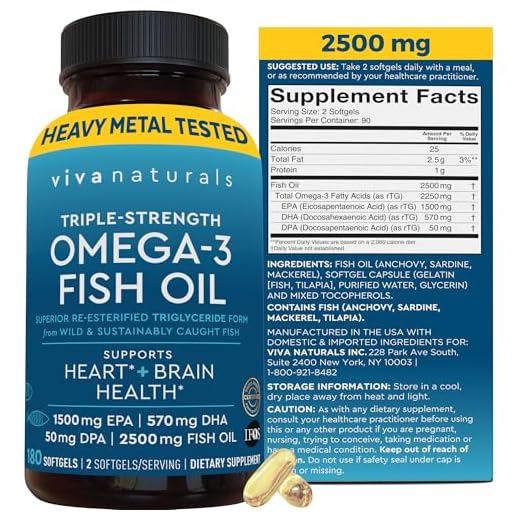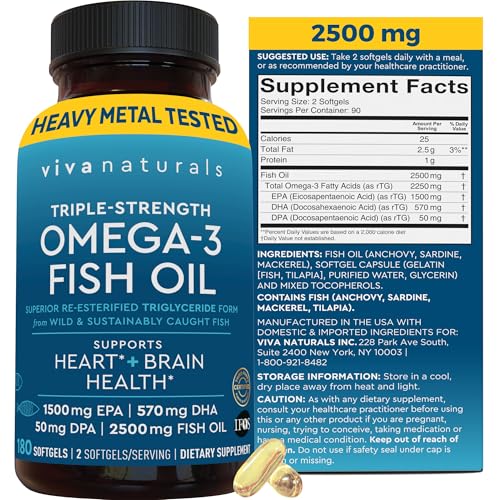

Regular grooming is a game-changer in managing fur loss. I suggest brushing at least twice a week to remove loose hairs and prevent them from cluttering your home. For my fellow Scottish Folds, a slicker brush works wonders, targeting those fine undercoats that can be tricky to handle.
Nutrition plays a significant role too. A diet rich in Omega-3 and Omega-6 fatty acids promotes healthy skin and fur. Look for high-quality cat food that lists these ingredients, or consider adding fish oil supplements to their meals. Always consult with your vet before making any changes to their diet.
Hydration is key. Ensure your furry friend has access to fresh water at all times; proper hydration helps maintain skin elasticity and can reduce excessive fur loss. Some cats enjoy flowing water from a fountain, which might encourage them to drink more.
Regular vet check-ups are essential. Conditions like allergies or skin infections can contribute to excessive fur loss. If you notice significant changes in your pet’s coat, don’t hesitate to schedule an appointment to rule out any underlying health issues.
Strategies to Reduce Fur Loss
Regular grooming sessions are key. I suggest using a slicker brush or a grooming glove to capture loose fur effectively. Aim for at least twice a week, increasing during seasonal changes.
Incorporate a high-quality diet rich in omega fatty acids. Foods containing fish oil or flaxseed oil contribute to healthier skin and coat. This can significantly minimize excessive fur loss.
Hydration plays a crucial role. Ensure fresh water is always available. Proper hydration supports skin health, reducing dryness and the amount of fur that ends up on your furniture.
Consider a humidifier during dry months. A little moisture in the air can alleviate skin irritations, helping to maintain a fuller coat and decrease fur fallout.
Regular vet check-ups are essential. Underlying health issues can contribute to increased fur loss. Keep an eye out for signs of allergies or skin conditions that may require professional attention.
Control the environment. Reducing stress through safe spaces and playtime can lead to less anxiety-related fur loss. A calm atmosphere benefits both you and your human.
| Method | Frequency | Benefits |
|---|---|---|
| Grooming | Twice a week | Reduces loose fur |
| Diet | Daily | Healthier skin and coat |
| Hydration | Always available | Supports skin health |
| Humidity | As needed | Prevents dryness |
| Vet Check-ups | Regularly | Identifies health issues |
| Stress Reduction | Ongoing | Decreases anxiety-related loss |
Understanding the Causes of Cat Shedding
Regular grooming is crucial because it reduces loose fur and helps manage the natural process of hair loss. I recommend using a slicker brush or a grooming glove to eliminate excess hair effectively.
Environmental factors play a significant role in my fur’s health. Changes in temperature, humidity, or exposure to sunlight can trigger increased hair loss. Ensuring a stable, comfortable environment helps keep my coat in check.
Nutrition matters too. A diet rich in omega-3 and omega-6 fatty acids supports skin and coat health. I thrive on high-quality cat food that meets my dietary needs, so make sure your furry friend is getting the right fuel.
Stress can lead to excessive hair loss as well. Changes in routine, new pets, or loud noises can make me anxious. Creating a calm space with familiar toys and cozy spots can help minimize stress-related fur loss.
Finally, regular vet check-ups are essential. Health issues like allergies, skin conditions, or parasites can contribute to excessive fur loss. Keeping an eye on my health ensures my coat remains full and shiny.
Choosing the Right Diet for Healthy Fur
Opt for high-quality cat food that contains essential fatty acids, particularly Omega-3 and Omega-6. These nutrients play a significant role in maintaining a shiny and healthy coat.
Key Ingredients to Look For
- Fish oil or flaxseed oil: Excellent sources of Omega-3.
- Chicken fat: Rich in Omega-6, promoting a lustrous fur.
- Whole proteins: Ensure proper nutrition and support fur health.
Incorporating wet food into the diet can also aid hydration, which is beneficial for fur vitality. Dry kibble might not provide enough moisture, leading to drier skin.
Supplements to Consider
- Fish oil capsules: A direct source of Omega fatty acids.
- Biotin: Supports skin health and fur growth.
- Zinc: Essential for skin regeneration and overall coat condition.
Always consult a vet before introducing new supplements or making significant dietary changes. For ideas on balanced nutrition, check out the best acana dog food for large breed as a reference for quality ingredients.
Regular Grooming Techniques to Minimize Shedding
Daily brushing is a must! I love it when my human grabs the slicker brush and spends some time on my fur. It helps remove loose hair and prevents it from ending up on the furniture. Aim for at least 10-15 minutes each day, focusing on areas where I tend to shed more.
Choosing the Right Tools
Invest in quality grooming tools. A slicker brush works wonders for removing loose hair, while a rubber grooming glove can help capture stray fur during petting sessions. For longer-haired friends, a wide-toothed comb can help detangle any mats, minimizing breakage.
Bathing and Conditioning
Occasional baths with a gentle cat shampoo assist in keeping my coat clean and can reduce loose fur. After bathing, using a leave-in conditioner designed for felines helps maintain moisture and prevents excessive dryness that might lead to more fur loss.
Importance of Hydration in Fur Health
Drinking enough water plays a significant role in maintaining a shiny and healthy coat. Ensuring proper hydration helps keep skin moisturized, which reduces dryness and flakiness. A well-hydrated feline is less likely to experience excessive fur loss.
Encouraging water intake can be achieved through various methods. Providing fresh, clean water daily is essential. Some cats prefer running water, so a pet water fountain might entice them to drink more. Additionally, adding wet food to their meals increases overall moisture consumption.
Here’s a quick checklist to enhance hydration:
| Method | Description |
|---|---|
| Fresh Water | Change water daily to encourage drinking. |
| Fountains | Consider a pet fountain for a continuous flow. |
| Wet Food | Incorporate canned food for added moisture. |
| Flavor Enhancements | Add low-sodium broth to entice drinking. |
Regular monitoring of drinking habits is important. If you notice a decrease in water intake, consult a veterinarian for advice. Maintaining hydration not only supports fur health but also overall well-being.
Creating a Stress-Free Environment for Your Cat
Ensure your living space is calm and peaceful. Provide cozy hiding spots where I can retreat when feeling overwhelmed. Consider investing in best cat furniture for large cats that offers both comfort and security.
Maintain a consistent routine for feeding and playtime. Predictability in my daily activities reduces anxiety, helping to keep my fur healthy and shiny.
Introduce interactive toys that stimulate my mind. Engaging play sessions alleviate boredom and promote physical activity, which benefits overall wellness.
Minimize loud noises and sudden changes in the environment. Create a soothing atmosphere with calming music or pheromone diffusers that promote relaxation.
Provide vertical spaces, like shelves or cat trees, where I can observe my surroundings. This sense of control enhances my comfort and reduces stress.
Lastly, ensure that my litter box is clean and accessible. A tidy space contributes to my overall happiness and well-being.
When to Consult a Veterinarian for Shedding Issues
If excessive loss of fur occurs alongside other symptoms, seeking veterinary advice is crucial. Look for signs like skin irritation, redness, or bald patches. Changes in behavior, such as increased scratching or grooming, warrant a professional assessment.
Signs Indicating a Visit is Necessary
- Persistent hair loss that doesn’t improve with regular grooming.
- Visible skin problems, including rashes, scabs, or inflammation.
- Changes in appetite or weight.
- Behavioral shifts, such as increased aggression or hiding.
- Frequent vomiting or diarrhea.
Conditions to Investigate
- Allergies to food, environmental factors, or parasites.
- Infections, fungal or bacterial, affecting the skin.
- Underlying medical issues like hormonal imbalances or autoimmune diseases.
- Stress-related problems leading to excessive grooming.
Regular check-ups can help detect any health issues early, ensuring my friends and I maintain a healthy coat and overall well-being. If any concerns arise, don’t hesitate to contact a veterinarian for guidance.
Tools and Products to Control Fur Loss
Regular brushing tools like slicker brushes and grooming gloves are must-haves for managing fur loss. These help remove loose hair efficiently while also distributing natural oils, keeping my coat shiny and healthy.
A de-shedding tool can be a game-changer; it reaches deep into the undercoat and pulls out dead hair effectively. Brands like Furminator are popular among my fellow felines for good reason.
Shampoos and Conditioners
Using a specialized shampoo designed for reducing fur loss during bath time helps keep my coat clean and minimizes loose hairs. Look for products with natural ingredients that nourish the skin and fur.
Dietary Supplements
Omega-3 fatty acids, found in fish oil supplements, promote a healthy coat. Adding these to meals can significantly improve fur quality and reduce excessive hair fall. Always check with the human before introducing new supplements.
FAQ:
What are some effective methods to reduce my cat’s shedding?
To minimize shedding in your cat, you can implement several strategies. Regular grooming is one of the most effective methods; using a brush designed for your cat’s coat type can help remove loose fur and prevent it from spreading around your home. Additionally, maintaining a balanced diet with high-quality cat food can improve skin and coat health, which may reduce shedding. Providing your cat with plenty of hydration is also important, as it helps keep their skin supple. If shedding seems excessive, consider consulting with a veterinarian to rule out any underlying health issues.
How often should I groom my cat to manage shedding?
The frequency of grooming your cat largely depends on their breed and coat type. Long-haired cats typically require more frequent grooming, often recommended several times a week, while short-haired cats may only need grooming once a week. Regular brushing helps remove loose fur and minimizes the amount of hair that ends up on your furniture and floors. It’s also a good opportunity to check your cat for any skin issues or parasites. Pay attention to your cat’s individual needs and adjust the grooming schedule accordingly.
Are there any special diets or supplements that can help with my cat’s shedding problem?
Certain diets and supplements can indeed support healthy skin and coat, which may help reduce shedding. Look for cat foods rich in omega-3 and omega-6 fatty acids, as these nutrients promote skin health and can lead to less shedding. Additionally, some pet owners find that fish oil supplements are beneficial. However, it’s essential to consult with a veterinarian before making any changes to your cat’s diet or adding supplements, as they can provide guidance tailored to your cat’s specific needs and health conditions.








